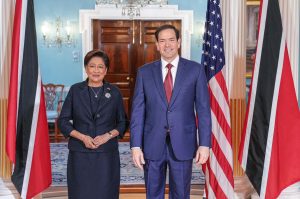Caption: Marijuana worth $136 million seized in Maracas. Photo TTPS
MORE than $136 million worth of Colombian (creepy) cannabis was discovered along a secluded inlet on the Maracas coast.
A specialist unit of the Trinidad and Tobago Police Service (TTPS) along with the Trinidad and Tobago Coast Guard (TTCG) and officers of the Northern Division launched the operation on Friday, a release from the TTPS stated.
Paid political ad
The operation was launched the specialist unit received information early Friday morning from a confidential source, which indicated that a known Drug Trafficking Network (DTN) had recently imported a substantial consignment of narcotics from South America. The drugs were reportedly stashed in a remote, sea-accessible location in the Maracas area, pending further transshipment to other regional territories.
The specialist unit quickly initiated an intelligence development process, to quickly pinpoint the suspected stash site.
Despite rough sea conditions, the TTCG skillfully navigated marine assets to the isolated inlet, where the joint team conducted a thorough search. The search led to the discovery of a large stash of narcotics concealed within dense forest cover, resting on a bank area, the TTPS stated.
The team seized 45 bales containing Colombian “Creepy” Cannabis, consisting of 2,250 packets with a combined weight of 1242.9 kilograms, and an estimated street value of TT$136,404,546.
Each bale was identically packed with 50 packets. The team secured the illegal narcotics which was transported to Staubles Bay, Chaguaramas, with the support of TTCG marine assets.
No arrests have been made to date, and investigations are ongoing.
Acting Commissioner of Police Junior Benjamin said, “This significant drug seizure underscores the Trinidad and Tobago Police Service’s unwavering commitment to protecting our nation from the threats posed by transnational criminal networks. We remain vigilant in our efforts to disrupt the illegal drug trade and will continue to leverage intelligence and work closely with our local, regional, and international law enforcement partners.”
![]()













